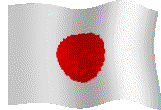
From DIGGER HISTORY: Mitsubishi G4M BETTY
Few would know it by its official designation, the Navy Type 1 Attack Bomber.
The Allies called it the BETTY, but to the men that flew the airplane,
it was popularly, but unofficially, the Hamaki, Japanese for cigar,
in honour of the airplane's rotund, cigar-shaped fuselage.
The Japanese built more of them than any other bomber during World War II.
From the first day of war until after the surrender,
BETTY bombers saw service throughout the Pacific and Indian Oceans.
Like its stable mate, Mitsubishi's Zero Fighter, the Hamaki soldiered on long
after it became obsolete, even dangerous, to fly wherever Allied interceptors prowled.
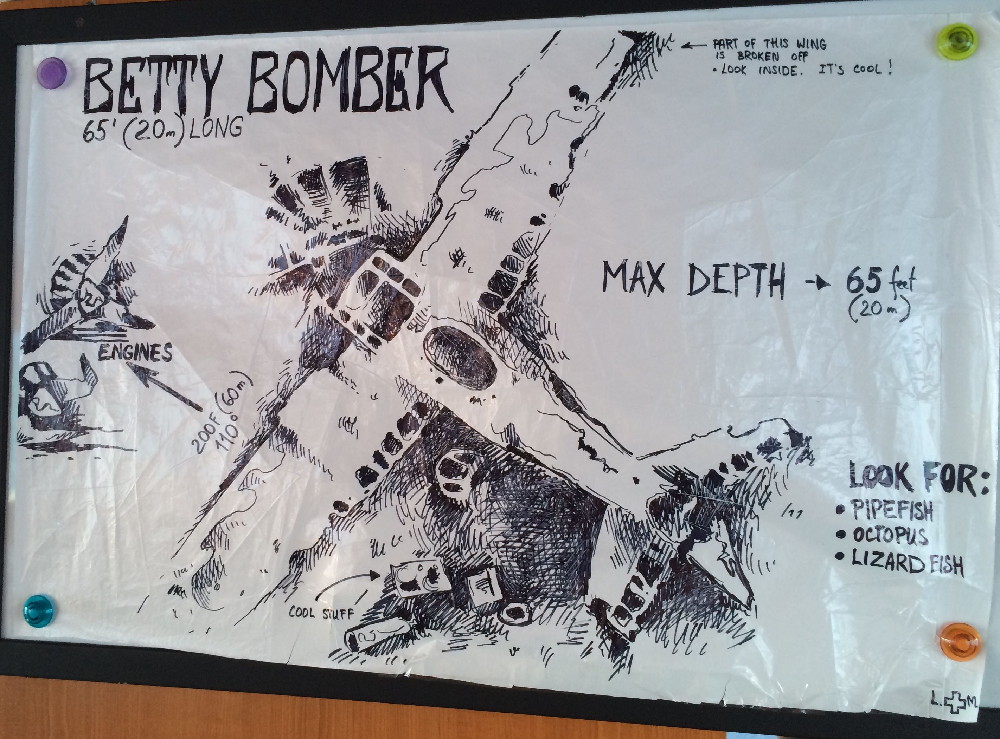
From WIKIPEDIA:
The G4M had very good performance, especially range,
which was achieved by its structural lightness and
an almost total lack of protection for its crew,
with no armor plating or self-sealing fuel tanks.
These omissions proved to be its weakness when confronted with
American fighter aircraft during the Pacific War.
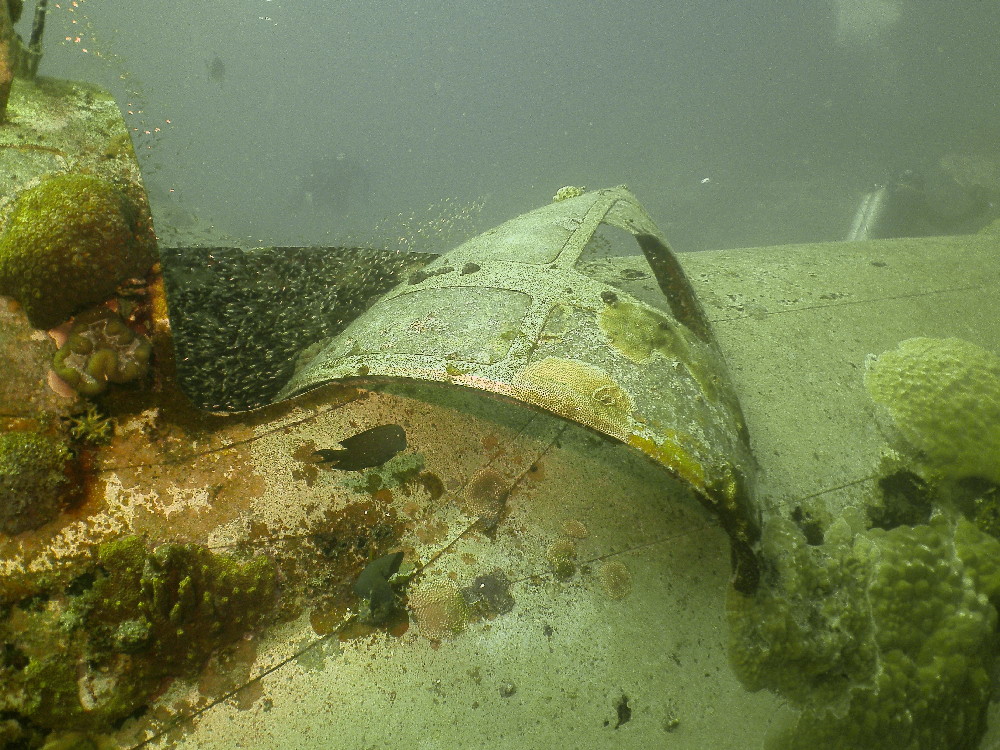
The top dorsal gunner canopy
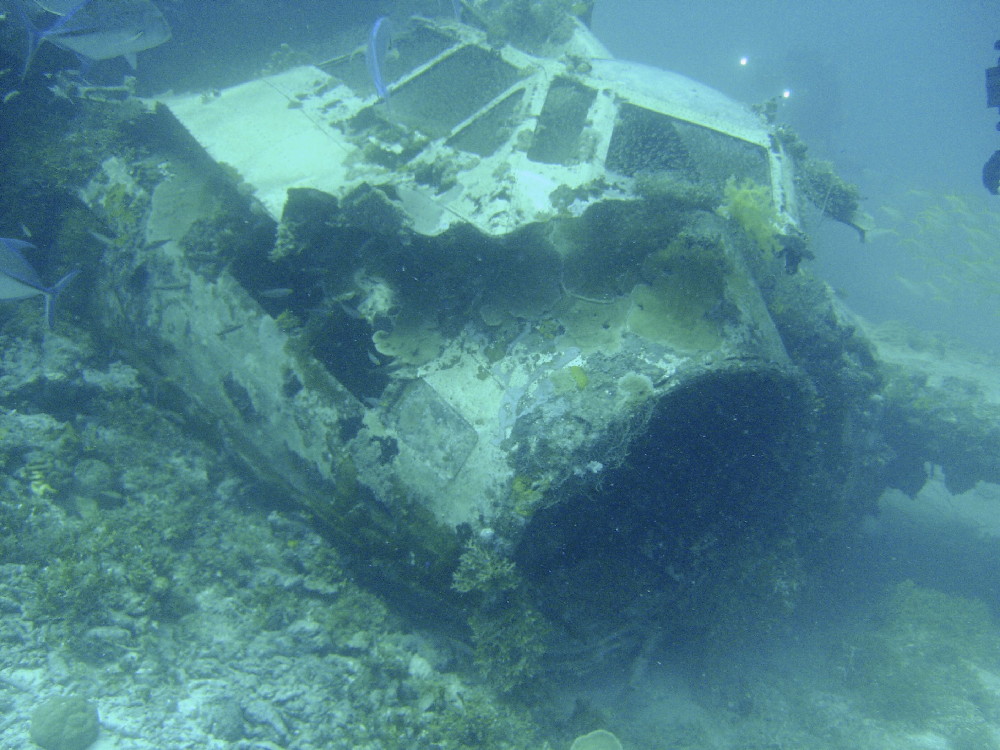
Neal writes: This plane was not shot down during a raid . . .
it crashed some other time.
This is evident because the propellers on the engine,
which were tossed 200' from the body and wings,
were not bent. That means the engines were not moving.
There also is no noticeable bullet or cannon damage.
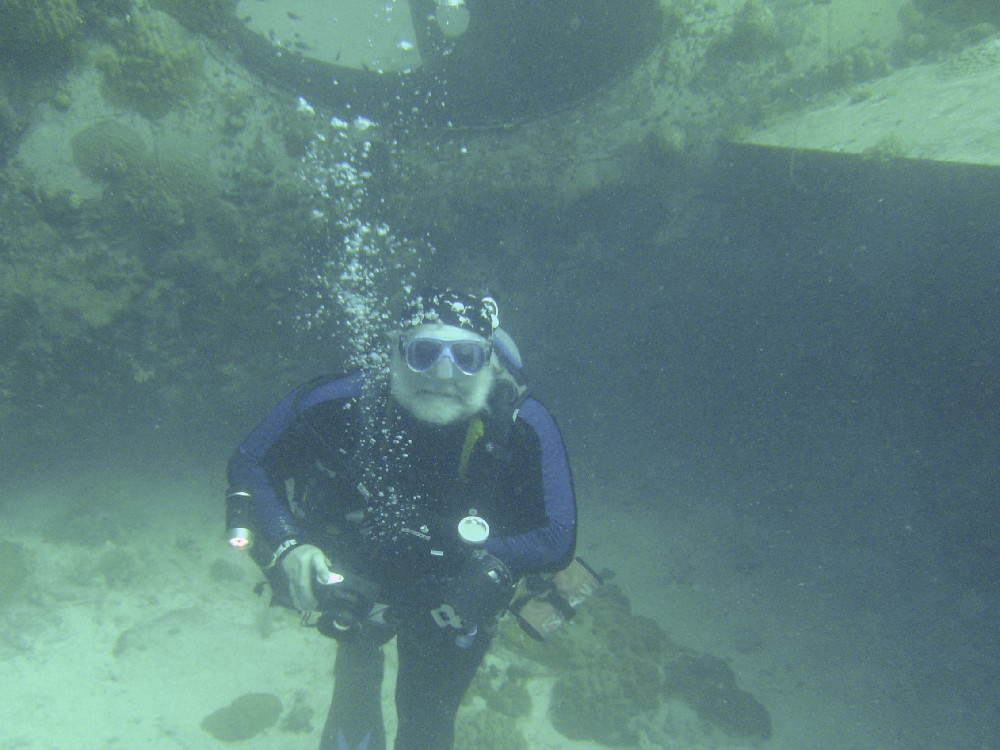
Just to prove I was here!
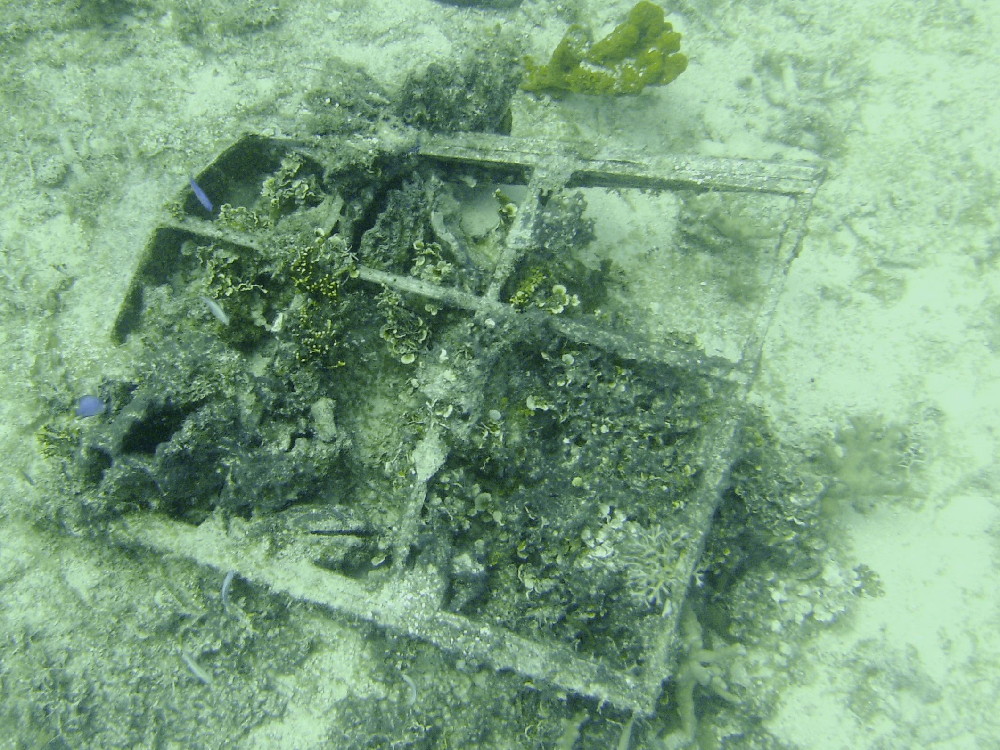
The front end (mostly glass) was completely crushed so
unless the rest of the seven-man crew had bailed out
(leaving only the pilot), there may have been only a few survivors.
Certainly the pilot was killed.
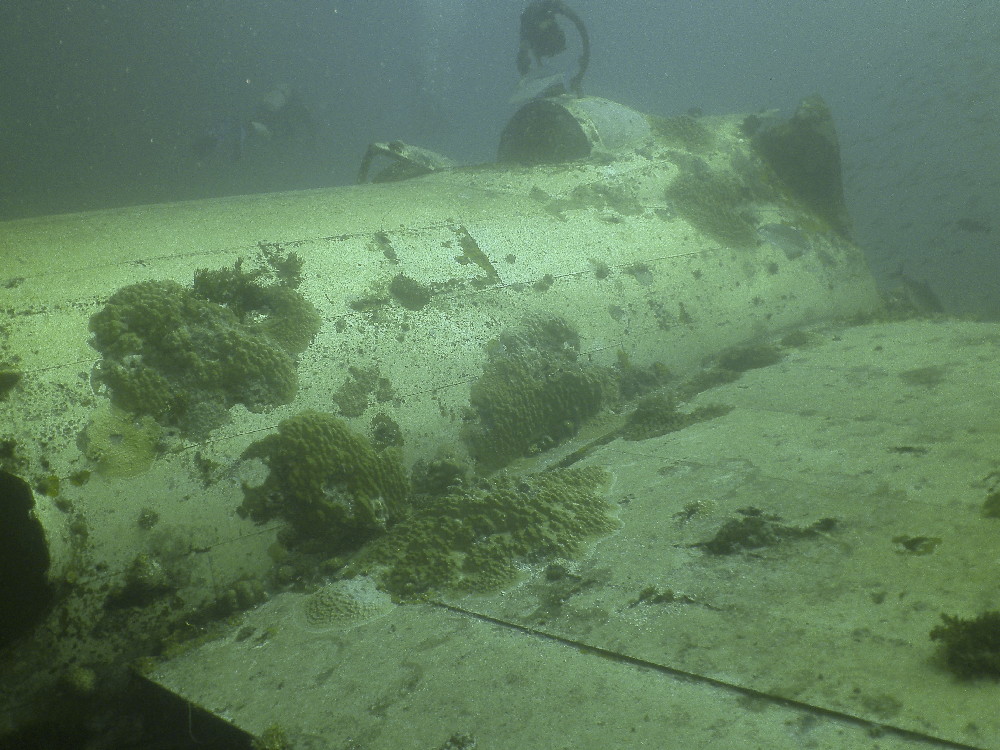
Sitting almost flat on the bottom of the lagoon,
tilted to one the left side down, right wing up.
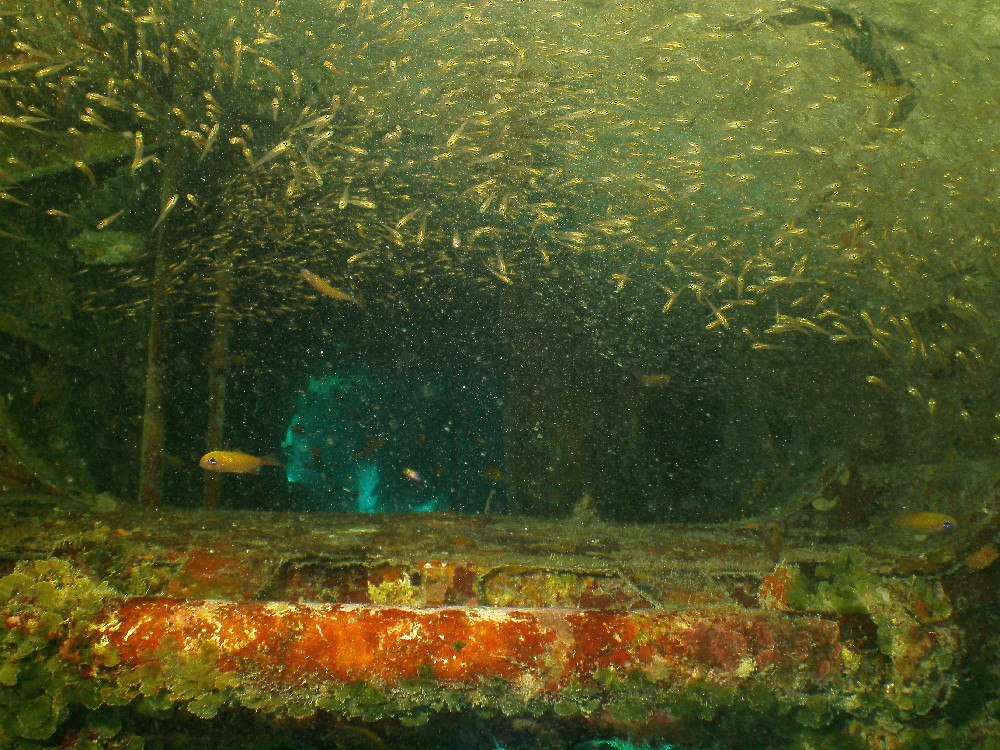
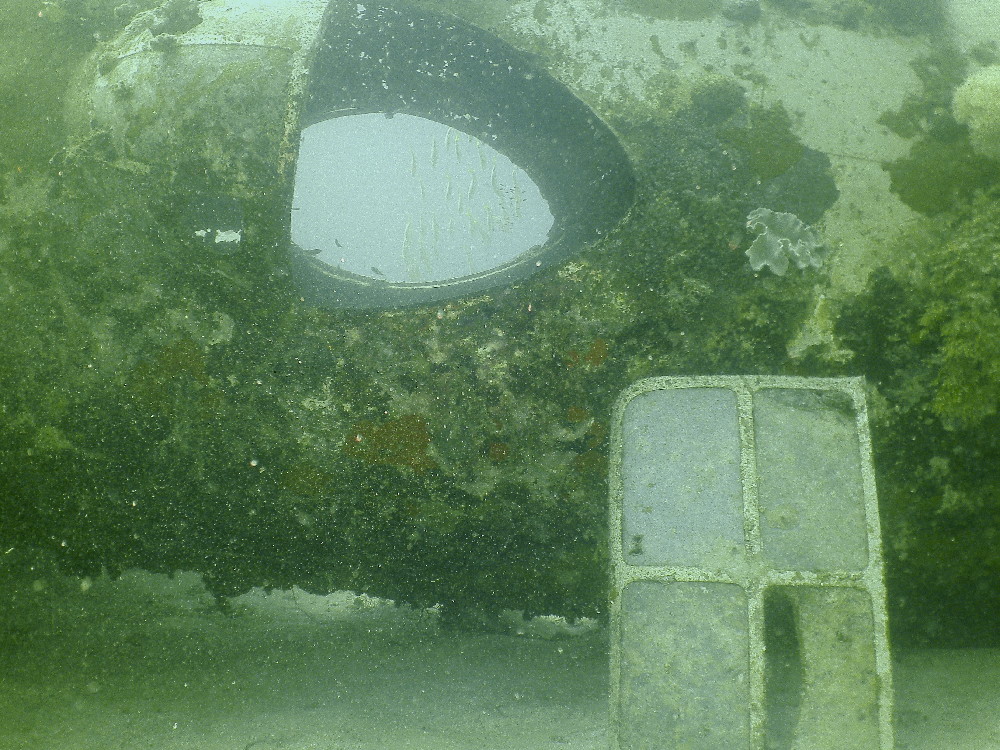
Left side door (waist) machinegun blister . . .
the glass panel may have come from the front "greenhouse" cockpit
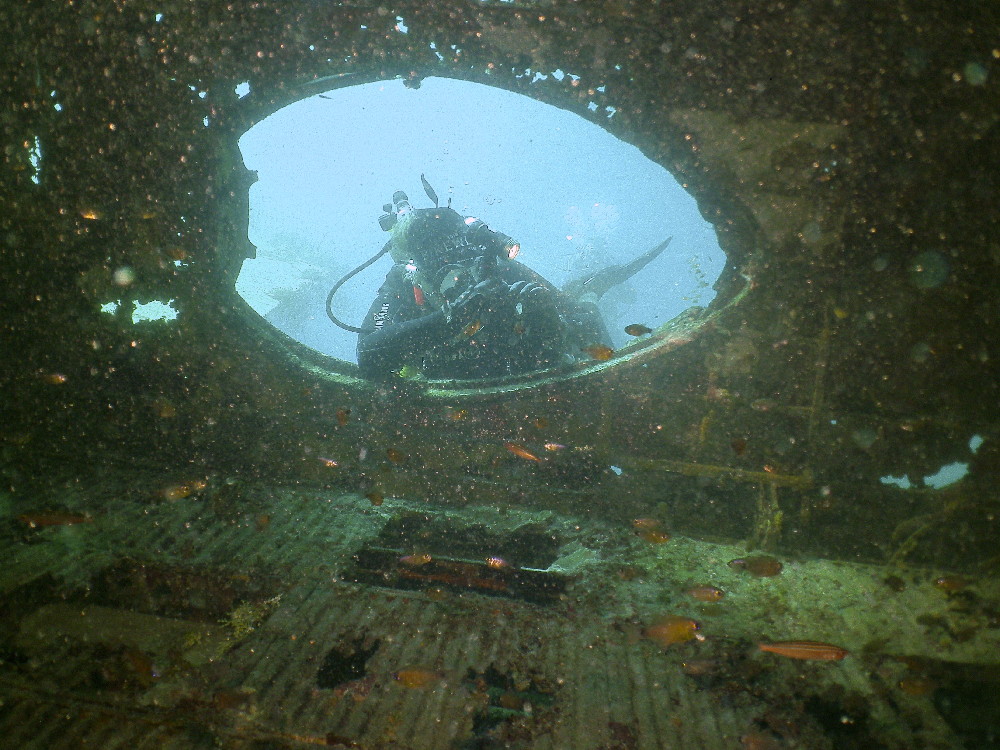
Looking through that opening to a diver on the other side
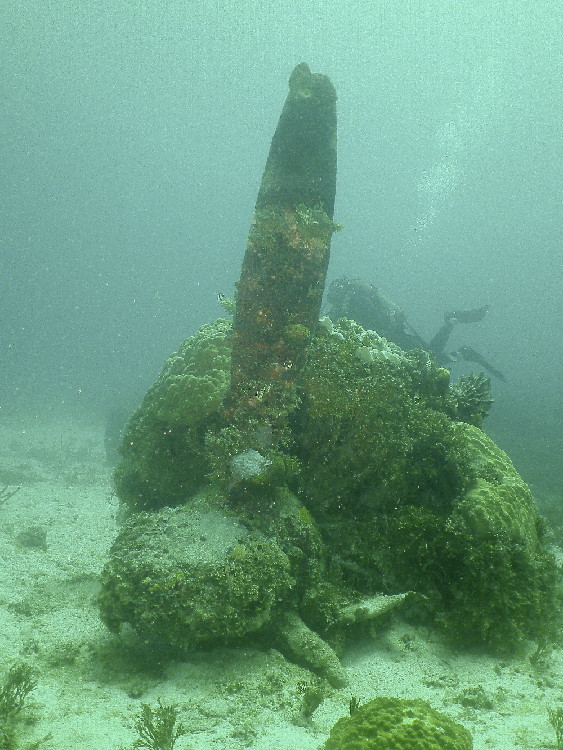
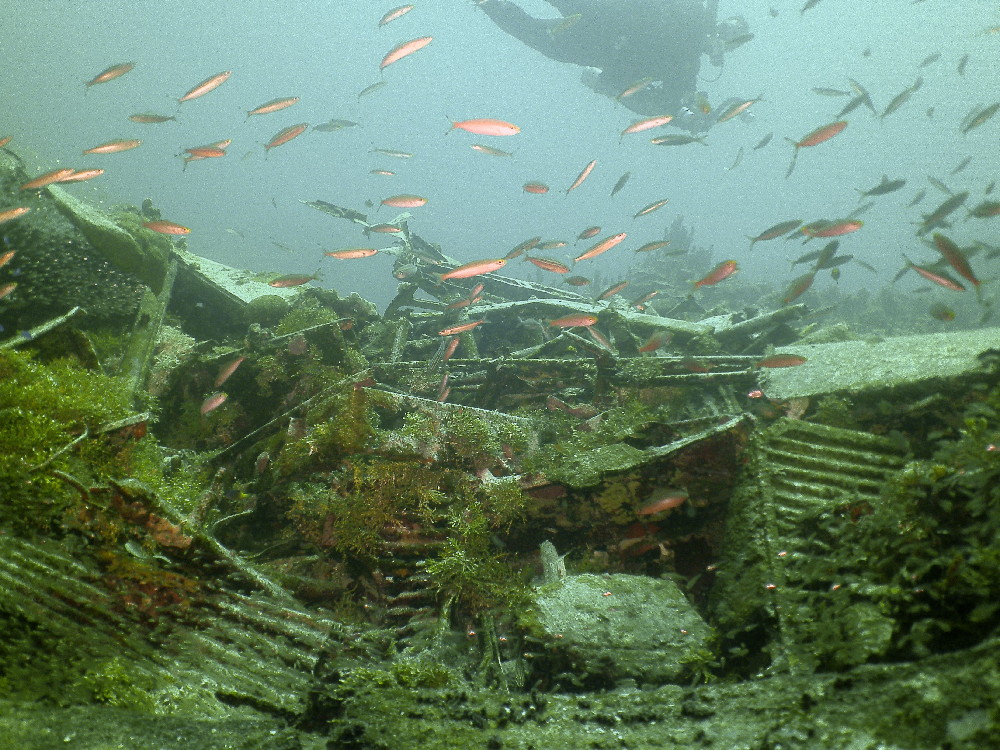
What's left of the front/nose/cockpit - just bent metal
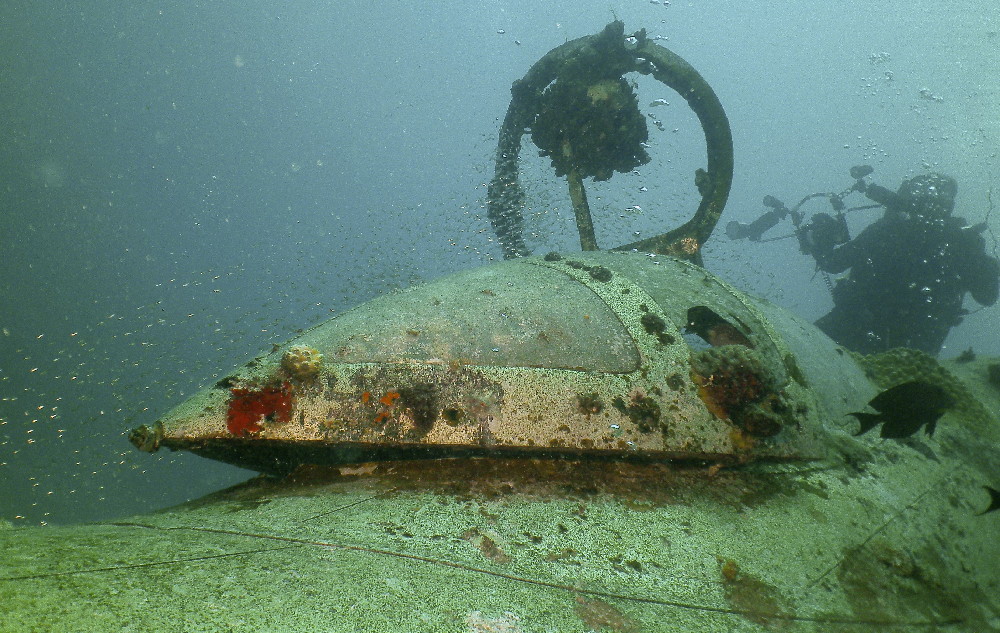
Dorsal Gunner bubble/opening
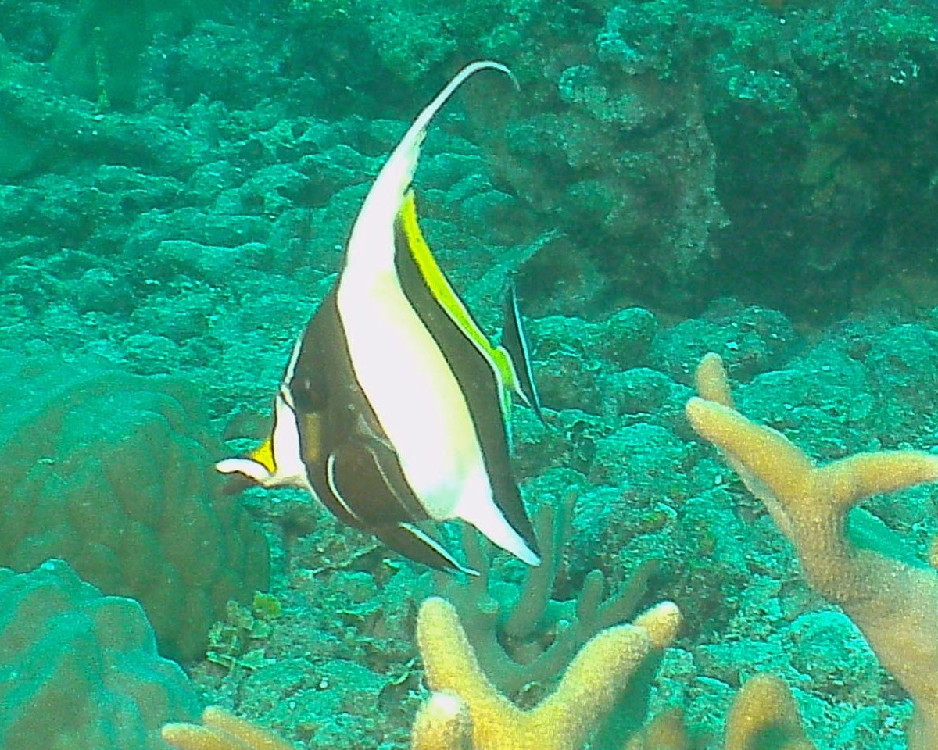
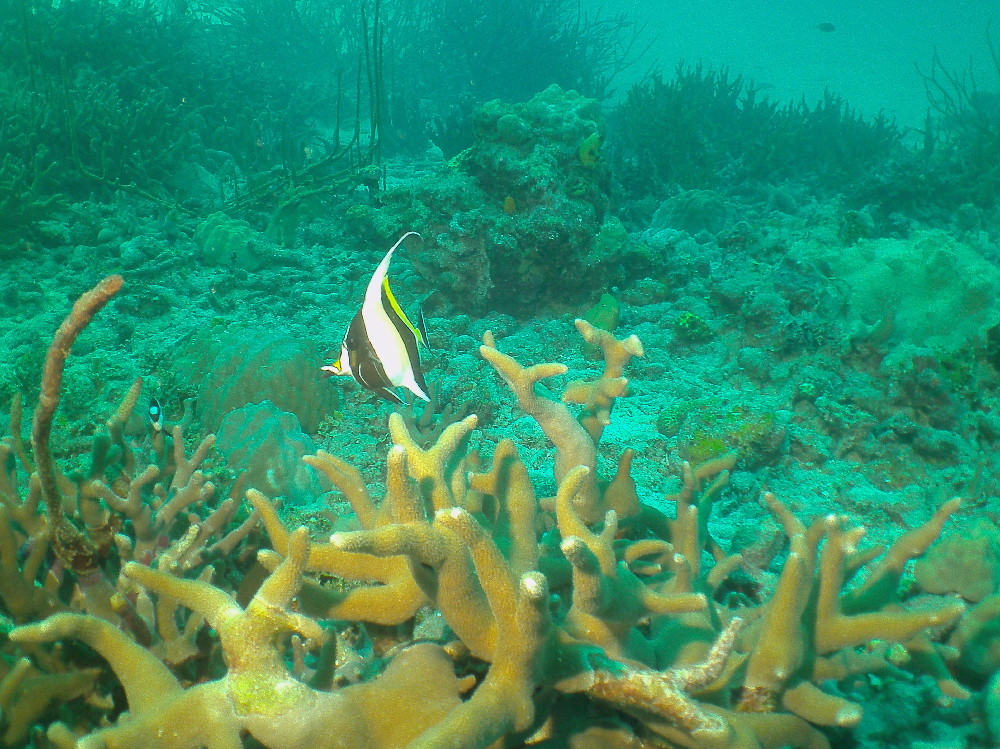
|

